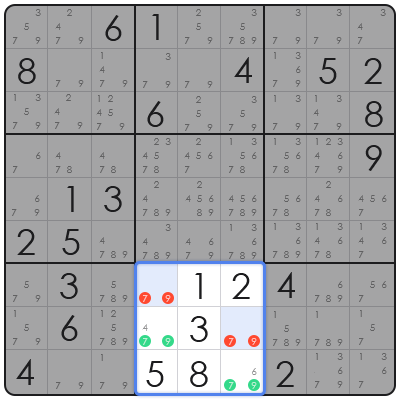Just like the "Obvious Singles" solving method, "Obvious pairs" is also based on correctly placed notes. The key is that you need to find two cells within a 3x3 block that have an identical pair of notes. This means that this pair of numbers cannot be used in any other cell within this 3x3 block. Therefore, you can remove them from the notes of the other cells. This strategy will be easier to understand if you look at the example.
Let's look at this block. We see the empty cells are filled with notes of possible numbers. Among them, two cells both contain either 7 or 9.
This means one of those cells must be 7, and the other must be 9. It also means that 7 and 9 cannot be placed in any other cell within this block.

Therefore, we remove them from the notes of the other cells. As a next step, we can apply the "Obvious Singles" rule that we learned in the last lesson. We will place a 6 in the cell that has only a single note of 6, and a 4 in the other cell.
This is how to use the "Obvious pairs" solving method when solving Sudoku. After you have learned it, you can continue to the next Sudoku strategy below.